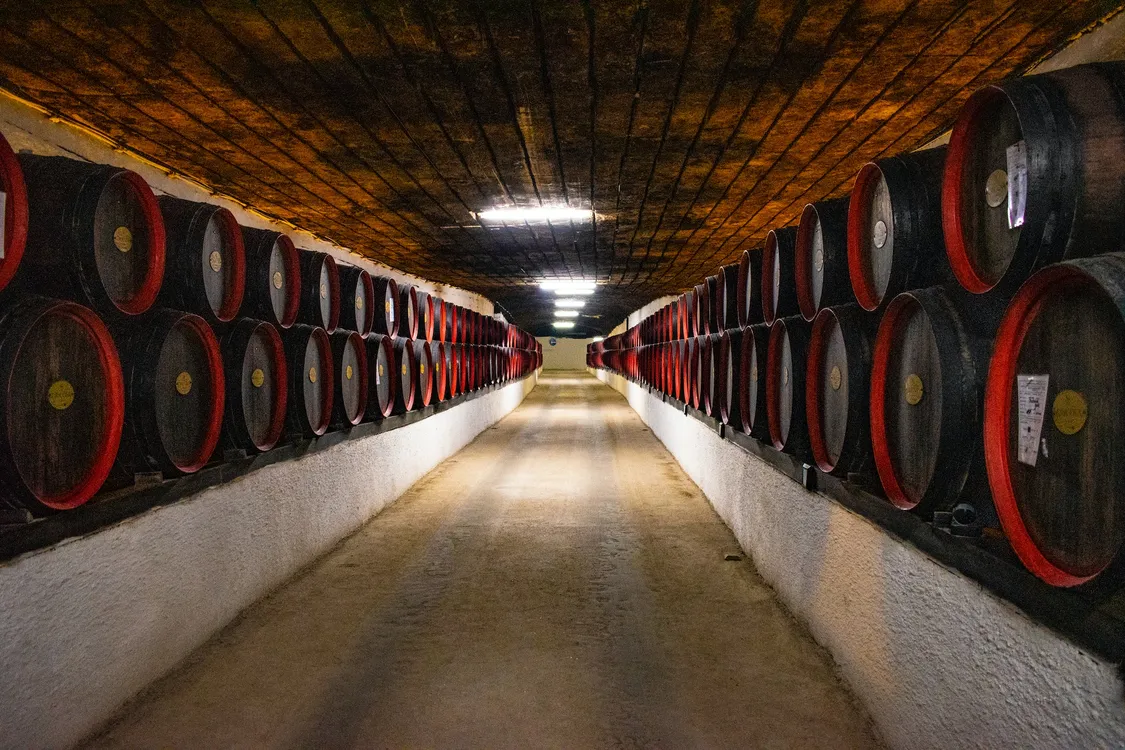Is Barolo or Brunello Better? Differences between Nebbiolo and Sangiovese

Introduction
In the vast landscape of Italian wines, Barolo and Brunello are two oenological icons, appreciated worldwide for their extraordinary quality and complexity. Both produced with indigenous grape varieties, Nebbiolo and Sangiovese, these two wines are often subject to comparison among wine enthusiasts. In this blog post, we will explore the differences between Nebbiolo and Sangiovese, analyzing the characteristics of the grape varieties, the production territories, and the peculiarities of the resulting wines, to understand if one is “better” than the other.
Nebbiolo and Sangiovese: Two iconic grape varieties
Nebbiolo
Nebbiolo is one of Italy’s most recognized grape varieties, known for its elegance and structure. Native to the Piedmont region, Nebbiolo finds its highest expression in the renowned Barolo wine. Nebbiolo features include:
-
Floral and Earthy Aromas: Nebbiolo offers intense and complex aromas of roses, violets, tobacco, and damp earth, giving the wine a unique personality.
-
Powerful Structure: Barolo, produced with Nebbiolo, is renowned for its tannic structure and full body. These tannins may be harsh in youth, but with aging, they soften, allowing the wine to develop refined elegance.
-
Aging Potential: Nebbiolo has an extraordinary aging ability. The best Barolos can continue to improve for decades, developing aromatic complexity and deep intensity.

Renato Ratti Langhe Nebbiolo Ochetti
Renato Ratti Langhe Nebbiolo doc Ochetti, annata 2021, uno dei nebbioli più conosciuti e apprezzati del mondo. Vino adatto a carni rosse allo spiedo e alla griglia, cacciagione, fonduta con tartufi, agnolotti, piatti di carni bianche e rosse della grande cucina con salse speziate
Sangiovese
Sangiovese is the principal grape variety of Tuscany and the heart of famous wines such as Brunello di Montalcino and Chianti Classico. Sangiovese characteristics include:
-
Red Fruit Notes: Sangiovese is known for its intense notes of red fruits, such as cherries and strawberries, contributing to a lively and inviting aromatic profile.
-
Acidity: Sangiovese has significant acidity, providing freshness and drinkability, making it an ideal companion for meals.
-
Diverse Expressions: Depending on the production area and winemaking techniques, Sangiovese can take on different facets, from the more classic and traditional style of Chianti Classico to the more complex and structured nuances of Brunello di Montalcino.

Castellare di Castellina Chianti Classico Riserva 2020
Il Sangiovese è il vitigno principe della Toscana e il cuore di vini famosi come il Brunello di Montalcino e il Chianti Classico. Il Castellare di Castellina Chianti Classico Riserva 2020 ne è un ottimo esempio.
Differences in production territories
Barolo
Barolo is produced in the Piedmont region, specifically in the Langhe hills, where the calcareous soil and variable microclimates contribute to creating ideal conditions for Nebbiolo. Barolo regulations require a minimum aging of 3 years, of which at least 2 years in oak barrels, but many producers choose to age the wine for longer periods, allowing Barolo to develop its distinctive complexity and structure.

Renato Ratti Barolo Marcenasco
Il Barolo è prodotto nella regione del Piemonte, in particolare nelle colline delle Langhe. Adatto a carni rosse allo spiedo e alla griglia, cacciagione, piatti di carni bianche e rosse della grande cucina e formaggi stagionati.
Brunello
Brunello di Montalcino comes from the Tuscany region, in the hilly area around the medieval village of Montalcino. The mineral-rich soil, warm climate, and influence from the Tyrrhenian Sea make this territory perfect for Sangiovese. Brunello regulations require a minimum aging of 5 years, of which 2 years in oak barrels and 4 months in the bottle before being released. Some producers choose to age Brunello for even longer periods, resulting in extraordinarily complex and long-lived wines.

Fattoria dei Barbi Brunello di Montalcino
Il Brunello di Montalcino proviene dalla regione della Toscana, nella zona collinare intorno al borgo medievale di Montalcino. Vino Rosso dalla grande struttura, importante e atto a lungo invecchiamento, ottimo con piatti ricchi di sapore come carni rosse stufate o selvaggina, grigliate o arrosti misti. Annata 2018
Peculiarities of the resulting wines
Barolo
Barolo is known as “the king of wines,” and the reason is evident. With its powerful structure, strong tannins, and complex floral and earthy aromas, Barolo is a wine of great personality and character. Aging in wood and bottle gives Barolo extraordinary complexity, with aromas and flavors evolving over time, providing a wide range of sensations on the palate.
Brunello
Brunello di Montalcino is a wine of great elegance and refinement. Fresh red fruit notes blend with tertiary nuances of leather, tobacco, and spices, creating an enveloping bouquet. Full-bodied and lively acidity give Brunello a harmonious balance, while silky and well-integrated tannins make the wine extraordinarily pleasant to drink. With aging, Brunello develops extraordinary complexity, showing a depth of aromas and flavors that make it an oenological treasure.
Conclusion
The question “Is Barolo or Brunello better?” doesn’t have a definitive answer, as both wines are iconic representations of Italy’s rich winemaking heritage. These two exceptional wines—Barolo, with its powerful tannins and complex structure, and Brunello, with its refined elegance and vibrant acidity—are unique expressions of their respective terroirs and grape varieties, Nebbiolo and Sangiovese.
Choosing between them ultimately comes down to personal preferences. Barolo captivates with its intensity and age-worthy potential, offering deep floral and earthy aromas that evolve over decades. On the other hand, Brunello charms with its balance, offering a harmonious blend of fresh red fruits and sophisticated tertiary notes that develop with time.
For wine enthusiasts and collectors, both Barolo and Brunello represent a worthy investment, offering not only superb drinking experiences but also wines that can age gracefully, revealing new layers of complexity over time. Whether you prefer the robust character of Barolo or the elegant finesse of Brunello, these two wines stand as pillars of Italian viticulture and will undoubtedly continue to be celebrated worldwide.
Why Barolo vs. Brunello Matters in 2024 and Beyond
As the global wine market becomes increasingly focused on premium labels and high-end experiences, understanding the nuanced differences between Barolo and Brunello is essential for any connoisseur. With climate change affecting wine production and shifts in consumer preferences toward more sustainable and quality-driven choices, both wines are likely to play a critical role in the future of fine wine. Barolo’s impressive aging potential and Brunello’s versatility with food pairings make them sought-after choices for collectors and wine lovers alike.
In 2024 and beyond, we expect to see continued interest in these wines, with markets like the U.S., Asia, and Europe leading the charge in demand for top-tier Italian wines. Whether you’re a seasoned collector or a newcomer to the world of Italian reds, Barolo and Brunello remain timeless choices, offering a depth of flavor and a connection to Italy’s winemaking tradition that few other wines can match.
Bargains showcase

Produttori Di Carema Carema
La coltivazione della vite nella conca del comune di Carema vanta una tradizione millenaria ed il frutto di tanto lavoro, un Rosso potente, ha riscosso nel corso dei secoli meritati riconoscimenti. Adatto all'abbinamento con arrosti, selvaggina, carni rosse, formaggi stagionati non piccanti o come vino da meditazione.



